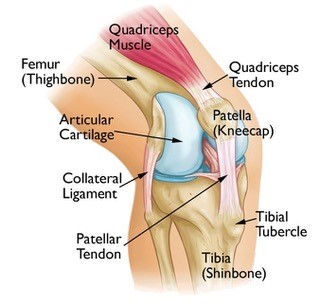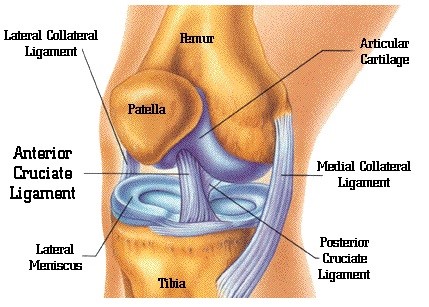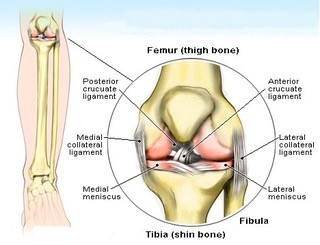Women are more likely to injure their knees than men. Damaging these joints even once could result in persistent stability issues for fencing.
Knee injuries are not limited to high-intensity fencers. Flèching, over stretching when lunging, or sudden changes of direction, whether during practice or competition, can cause the anterior cruciate ligament (ACL) to stretch beyond its normal range, resulting in a tear. In addition to traumatic injuries, such as a torn ACL, fencers should also be cognizant of overuse injuries. Unintentional damage to the knee joint can occur from weight training used to improve overall fitness; patellofemoral pain syndrome (PFPS) is a common overuse injury.
This risk is especially high for women. Women are twice as likely to incur a knee injury and are between two and eight times more likely to damage their ACLs.
A medical study of anatomy found that women are more prone to knee injuries as a result of their structure. Women typically have wider hips, higher rates of knock knee syndrome, less space for the ACL, and weaker ligaments. They also have a tendency to use their thigh muscles more than their hamstrings. These anatomical factors all put stress on the ACL, effectively stacking the deck against the female knee joint. There may be hormonal factors as well. Fluctuating hormones may impact on how loose the ligaments are at different times and for some women, that may mean decreased knee stability.
Anterior Cruciate Ligament (ACL) tears: These injuries tend to occur when the fencer stops or changes direction suddenly in foot work or lands incorrectly in the lunge attack, often during an intense situation in competition. The ACL keeps the shinbone from sliding out in front of the thighbone. Overextending or tearing may result in pain, swelling, and reduced range of motion. In order to reduce this risk, it is critical that female fencers follow a warm-up program before fencing, focusing on the correct knee over feet and under hip position when landing in the lunge and during rapid foot work.
Patellofemoral Pain Syndrome (PFPS), also known as Fencer’s Knee: These injuries often result from over-lunging and over-exercising. Improper hip-knee-ankle alignment, too many squats, or other
overuse of the knee joint can cause pain in the front of the knee and soft tissue. Maintaining the proper on guard position or lunging will be uncomfortable, if not painful. Severe PFPS may require a reduction in activity until the pain dissipates. A patellar tracking sleeve fitted bracing, custom-fit orthotics, or both can help.
Meniscus Tears: The meniscus is the cartilage that acts as a shock absorber between your thighs and shins. When you tear your meniscus, you may hear a pop or feel pain a few days
later. Tears often happen when you are squatting or twisting your knees, such as when you are attacked during fencing. Aging is also a factor. Sometimes an awkward return from a deep, or over extended, lunge can be all it takes. Small tears may heal with rest, but severe tears require surgery.
Warm up before fencing and wear shoes with good grip to minimize slipping in order to reduce your risk of injury.



Bac Tau
Maître d’Armes EPS